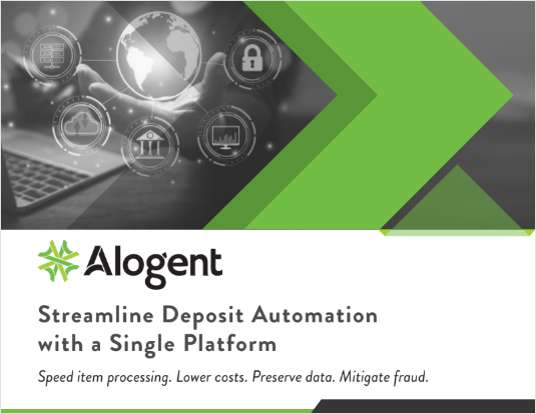DALLAS - The idea of credit unions paying for outside asset liability management expertise was foreign to most credit unions back in 1995 when ALM First Financial Advisors, LLC was formed. It's the norm today, and with $8 billion in credit union funds under management, ALM First's pioneering effort with fee-based advisory services has paid off big time. ALM First's leaders say they have been able to build up such an impressive book of credit union business over the years by sticking to their original vision of providing fee-based advisory services that aim to balance profitability and risk. The financial advisory firm, started through its parent company, $1.7 billion Eastern Corporate Federal Credit Union (EasCorp) in 1995, is the brainchild of ALM First President Emily Hollis and Managing Director Tom Manley. Hollis and Manley were colleagues at Kidder Peabody Asset Management - she as vice president and he as assistant vice president of the firm's credit union advisory group. They both also have corporate credit union experience as a chief investment officer and a portfolio manager, respectively. Together, they pitched the idea of a company that could offer fee-based advisory services at a time when skeptics dismissed the notion that credit unions would not embrace anything other than commissions, Hollis said. Both Texas natives convinced EasCorp, which is based in Woburn, Mass., that ALM First could find its way even though it would be headquartered thousands of miles and a time zone away in Dallas. "We saw Dallas as a good opportunity to carve a niche," Hollis said. "It has actually worked out because many of the credit unions we serve are in the West. It's a mid-way point for us." Even though EasCorp bought into the idea of a CUSO that could offer credit unions a platter of investment advisory services including total return portfolio management service, balance sheet and investment portfolio overview and asset/liability management, having the corporate's financial backing didn't make ALM First's initial year in business that much smoother. It took nearly 18 months to "turn the corner with cash flow," Hollis said. The new CUSO was drawing down on its cash flow and even came to the brink of exhausting it. "At one point, we were getting nervous," Hollis recalled. "We were in a tiny office, recycling paper - we couldn't afford a refrigerator or a coffee pot - we were just trying to pinch pennies everywhere we could. Our systems were excellent but we were operating with just one laptop for everybody." ALM First's initial nine clients came through thanks to EasCorp as it worked hard to steer credit unions towards the new CUSO. Credit unions were "dipping their toes in ALM" but the industry initially didn't see the need for paying for asset/liability management especially since regulations were not as stringent nearly a decade ago and commissions were widely accepted by credit unions. "We felt early on that we were on to something, it was an easy sell for us," Manley said. "Going to credit unions that didn't know us was hard. We couldn't convince some of them because they thought we didn't have financial stability and we would be gone in a year." Through word of mouth, slowly, Manley and Hollis began to chip away at the skepticism, but it was still tough going even after garnering 11 clients that first year in business. "Just when we were drawing down to nothing, we got six accounts over two months," Hollis said. "This is when we turned the corner." Projections for the first year were "above the low Ks but below the high Ks," Manley said, and each subsequent year the CUSO has exceeded its annual projections. Today, ALM First claims $8 billion in funds under management through 86 credit unions and seven corporate credit unions. While 10 of its clients are credit unions with more than $1 billion in assets, more than half of its business comes from 45 credit unions with more than $250 million in assets, Manley said. The CUSO has 20 employees and clients in 17 states. ALM First's investment advisory service is its signature product providing investment and analytical services for credit union balance sheets including ALM management, investment execution, accounting and analytical reports, portfolio evaluation and strategy and policy review. The CUSO also does ALM management analysis involving net economic value reports; balance sheet and investment portfolio risk assessment and hedging including analysis of a credit union's volatility of earnings, NEV of capital and derivative recommendations and execution. Manley said all of ALM First's clients are involved with the investment advisory service with a 100% conversion rate to other services. While ALM First has credit union clients in 17 states - the bulk of them located in the New England states, the South Central and Western regions of the country, there is no divvying of geographic locales among the CUSO's advisors. Manley said each of the company's six financial advisors has its own team. "We tried to focus people geographically but sometimes there is overlap," Manley said. "A lot of times, there's just a natural fit and we build on that rather than focus on what part of the country the credit union is located in." Being in Dallas has turned out to be a boon for business. One of its largest clients is $3.7 billion American Airlines Federal Credit Union in Dallas. ALM First recently added $1.5 billion Credit Union of Texas to its roster. As many of its clients are in the top tiered asset range and as the firm has migrated from "mom and pop to larger ones," it was still critical that the CUSO maintain "mom and pop service," Manley said. "We have adopted a philosophy of service first, meaning, preserving a level of intimacy with the clients," Manley said. "We don't try to grow for growth's sake. Every time we get a bump, we continue to make sure we take care of the accounts and nothing is lost in the service." One way ALM First has worked to solidify that intimate exchange is through education. Since 1998, ALM First and EasCorp have held "investment academies" for finance and accounting professionals, CFOs, CEOs and controllers. An introductory session was added this year to accommodate credit union employees that don't work in finance. Topics for that session range from knowing key financial performance indicators and identifying and managing risk to developing risk-management policies and practices. More complex issues are discussed in the "intermediate" and "advanced" academies, Hollis said. The goal of the academies is ultimately to "develop a serious-minded group of professionals who know how the fee structures work," Hollis said. While more CFOs and CEOs attended the academies when they first launched, credit union staff with less extensive financial background have signed on to the seminars, which are held twice a year. More than 40 attendees attended the academies each year. Besides several products in the developmental phase, ALM First recently reorganized its advisory structure to increase its level of service, Manley said. The six teams will have a mentoring component that will pair veteran advisors with new ones. "We can say we showed some foresight early on because back then, it didn't seem that ALM was needed," Hollis said. "Credit unions and broker-dealers were reactive in nature with their investment and strategy processes. We saw an opportunity to preach the ALM philosophy and it has now come to fruition." [email protected]
Complete your profile to continue reading and get FREE access to CUTimes.com, part of your ALM digital membership.
Your access to unlimited CUTimes.com content isn’t changing.
Once you are an ALM digital member, you’ll receive:
- Breaking credit union news and analysis, on-site and via our newsletters and custom alerts
- Weekly Shared Accounts podcast featuring exclusive interviews with industry leaders
- Educational webcasts, white papers, and ebooks from industry thought leaders
- Critical coverage of the commercial real estate and financial advisory markets on our other ALM sites, GlobeSt.com and ThinkAdvisor.com
Already have an account? Sign In Now
© 2024 ALM Global, LLC, All Rights Reserved. Request academic re-use from www.copyright.com. All other uses, submit a request to [email protected]. For more information visit Asset & Logo Licensing.









